What Is Cyber Threat Intelligence (CTI)?
Comprehensive Guide to Types, Uses, Best Practices, and Trends
In today’s rapidly evolving digital landscape, cyber threats are becoming increasingly sophisticated and numerous. Organizations of all sizes worldwide face immense challenges in defending against attackers who continuously adapt their techniques. To stay ahead, many companies rely on Cyber Threat Intelligence (CTI)—a critical cybersecurity function that empowers security teams to proactively identify, understand, and mitigate emerging threats. This comprehensive guide explores what CTI is, the various types and sources of threat intelligence, how data is collected and analyzed, integration into security operations, and emerging trends. The goal is to provide practical insights that help build robust CTI programs with global relevance.
Understanding Cyber Threat Intelligence
Cyber Threat Intelligence is the process of gathering, analyzing, and sharing information about existing or potential cyber threats. Unlike generic security alerts, CTI equips organizations with context-rich and actionable intelligence tailored to their specific environments. This intelligence enables informed decision-making across prevention, detection, incident response, and risk management efforts. CTI helps organizations understand who the attackers are, what tactics they employ, which vulnerabilities they target, and when and how attacks might occur.
By applying CTI effectively, businesses can prioritize security investments, reduce the threat surface, and respond faster when incidents occur—ultimately minimizing potential financial, operational, and reputational damage.
Types of Cyber Threat Intelligence and Popular Frameworks
CTI is typically categorized into four main types, each aligning with different aspects of cybersecurity strategy and operations:
-
Strategic Threat Intelligence: This level delivers broad insights primarily aimed at executives and decision-makers. It analyzes threat actor motivations, geopolitical trends, and macro-level cyber risks affecting the organization’s industry or sector over the long term. Strategic intelligence informs policy development and resource allocation.
-
Operational Threat Intelligence: Focused on specific cyber campaigns, breach attempts, or malware campaigns, operational CTI helps security teams understand the “who,” “what,” and “when” of ongoing attacks. It provides relevant details to anticipate and thwart attack campaigns.
-
Tactical Threat Intelligence: This pertains to adversarial tactics, techniques, and procedures (TTPs). Security teams use tactical intelligence, often mapped to frameworks such as the MITRE ATT&CK®, to fine-tune detection rules, hunting criteria, and response strategies against attacker behaviors.
-
Technical Threat Intelligence: Comprising indicators of compromise (IOCs) such as suspicious IP addresses, domains, file hashes, and malware signatures, technical CTI feeds automated defenses and detection systems like SIEM and endpoint protection systems.
Adopting these CTI types enables comprehensive threat awareness, balancing high-level strategic insights with granular technical indicators.
Data Sources and Collection Methods
Trusted CTI depends on diverse data sources and refined collection techniques:
-
Open Source Intelligence (OSINT): Publicly available information including security blogs, vulnerability reports, dark web forums, social media chatter, and vendor bulletins. OSINT helps identify emerging threats early.
-
Internal Telemetry: Logs, alerts, endpoint and network data gathered from within the organization’s own environment. This includes firewall logs, intrusion detection system (IDS) outputs, and unusual traffic patterns.
-
Dark Web and Deep Web Monitoring: Specialized tools scan underground marketplaces, hacker forums, and paste sites to detect stolen credentials, leaked data, and chatter about targeted attacks.
-
Commercial Threat Feeds: Subscription services curate verified threat data with high confidence scores, providing organizations with timely and relevant intelligence from trusted researchers and vendors.
-
Community Sharing and ISACs: Information Sharing and Analysis Centers (ISACs) and industry groups facilitate collaborative threat sharing, enhancing collective defense.
Successful CTI programs blend multiple sources to create an enriched understanding that neither pure OSINT nor internal telemetry alone can achieve.
Analysis, Processing, and Enrichment
Raw threat data is often noisy and incomplete. Security teams use several advanced techniques to create actionable intelligence:
-
Data Normalization: Standardizes formats from disparate sources to create a unified view.
-
Correlation and Aggregation: Connects related data points across systems to detect patterns and suspicious behaviors.
-
Contextual Enrichment: Appends metadata such as threat actor profiles, geolocation, historical attack data, and vulnerability impact to heighten decision relevance.
-
Machine Learning and Artificial Intelligence: AI/ML algorithms help filter false positives, highlight anomalies, and prioritize urgent threats in massive data volumes.
-
Human Analysis: Expert analysts validate findings, interpret complex signals, and provide insight that automation alone cannot.
Robust enrichment and analysis ensure CTI is timely, relevant, and digestible for security teams under pressure.
Dissemination and Integration of CTI
To maximize value, CTI must be effectively disseminated and integrated:
-
Reporting: Tailored intelligence reports align with audience needs, from high-level executive summaries to detailed technical dossiers.
-
Automated Sharing: Integration with Security Information and Event Management (SIEM), Security Orchestration, Automation and Response (SOAR), Endpoint Detection and Response (EDR), and firewalls enables live application of threat intelligence for blocking or investigation.
-
Collaborative Platforms: Sharing through trusted hubs and standards like STIX/TAXII fosters coordinated defense and rapid warning across sectors.
-
Training and Awareness: Embedding CTI insights into security awareness and training programs raises organizational vigilance.
Such dissemination aligns intelligence with operational workflows, making it a continuous defense asset rather than static data.
Use Cases and Benefits of CTI
CTI supports dozens of security functions; common use cases include:
-
Threat Detection: Enhancing existing detection systems with enriched IOCs and behavior profiles to reduce false positives and identify stealthy attacks.
-
Incident Response: Enabling teams to quickly identify attack attributes, predict attacker follow-on activities, and tailor remediation effectively.
-
Cyber Threat Hunting: Driving proactive audits and investigations guided by intelligence on attacker tactics and infrastructure.
-
Vulnerability Management: Prioritizing patching based on active exploitation intelligence and attacker interest.
-
Strategic Risk Planning: Informing executive risk assessments and cybersecurity investment decisions with threat landscape context.
By integrating CTI, organizations increase security effectiveness and operational efficiency while reducing risks.
Challenges and Best Practices
Common challenges include:
-
Data Volume and Noise: Excessive threat data can overwhelm teams without proper filtering.
-
Skills Shortage: Finding and retaining skilled intelligence analysts remains tough globally.
-
Integration Hurdles: Difficulties embedding CTI into operational tooling and workflows.
Best practices for success:
-
Set clear intelligence requirements aligned with business risk.
-
Combine automated enrichment with expert analysis.
-
Adopt industry standards and interoperable formats.
-
Promote collaboration internally and externally.
-
Continuously evaluate and refine your CTI program maturity.
Overcoming these challenges maximizes CTI value and return on investment.
Emerging Trends
-
AI and Automation: Increasing use of AI models for threat detection and behavioral analytics.
-
Extended Detection and Response (XDR): Consolidating visibility across the entire enterprise.
-
Cloud-Native Intelligence: Leveraging scalable cloud platforms for CTI collection and dissemination.
-
Focus on Supply Chain and IoT: Addressing complexities introduced by new technology ecosystems.
Keeping pace with trends ensures CTI programs remain relevant and effective.
Compliance, Privacy, and Ethics
With growing data privacy laws like GDPR, CTI teams must:
-
Ensure lawful data collection, processing, and sharing.
-
Maintain transparency regarding how threat intelligence is used.
-
Share intelligence responsibly to avoid harm or misuse.
Ethical CTI builds trust and supports sustainable cybersecurity ecosystems.
Industry Applications
-
Finance: Preventing fraud and targeted financial crimes with threat context.
-
Healthcare: Protecting sensitive patient data while complying with regulation.
-
Government: Shielding critical infrastructure and sensitive operations.
-
Retail: Combating e-commerce fraud and supply chain compromise.
Customizing CTI efforts by industry strengthens security posture.
People Also Ask (PAA)
What is cyber threat intelligence (CTI)?
Actionable information about cyber threats to proactively defend networks.
How does CTI improve cybersecurity?
By providing context that leads to faster detection and smarter responses.
What are the types of CTI?
Strategic, operational, tactical, and technical.
Why is CTI important?
It helps organizations anticipate threats and align defenses with business risk.
Conclusion
Cyber Threat Intelligence is indispensable for cybersecurity resilience today. Understanding its types, expertly collecting and analyzing data, seamlessly integrating intelligence into operations, and embracing emerging innovations equip organizations globally to defend against threats effectively and stay ahead of attackers.



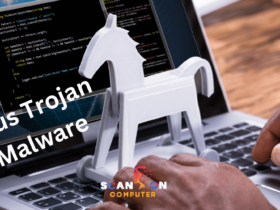


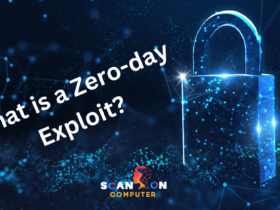
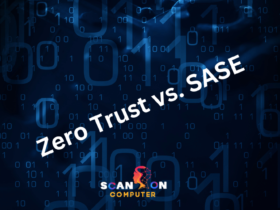



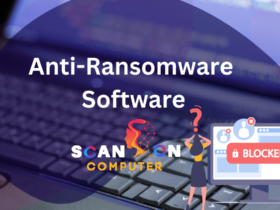
Leave a Reply
View Comments